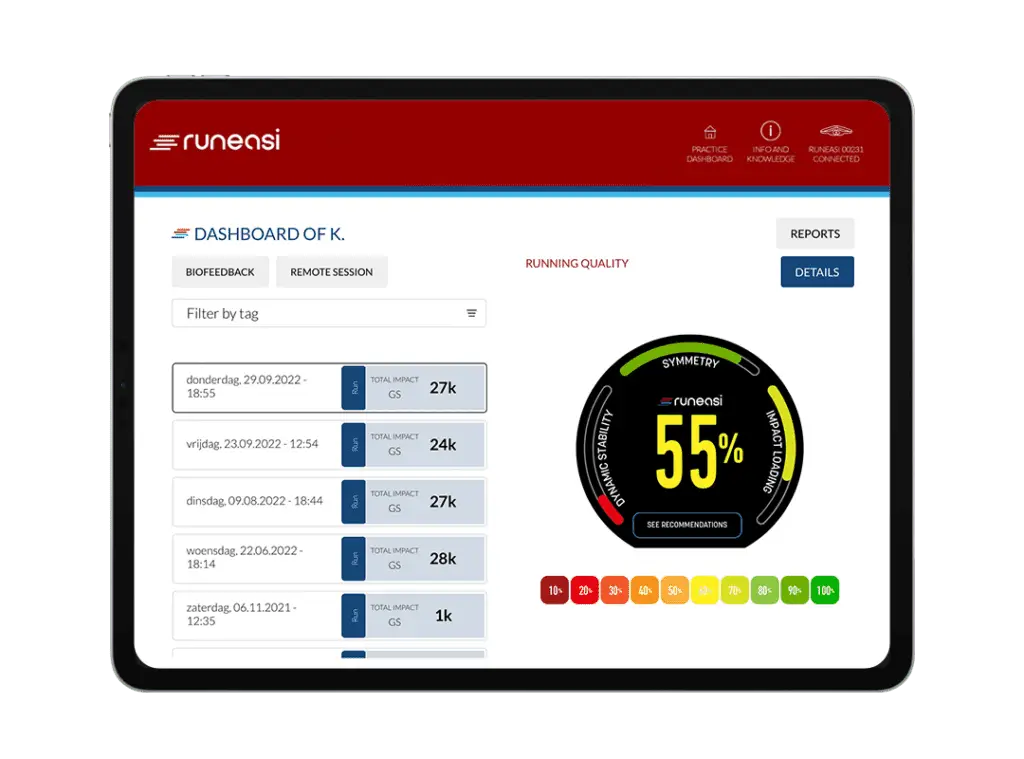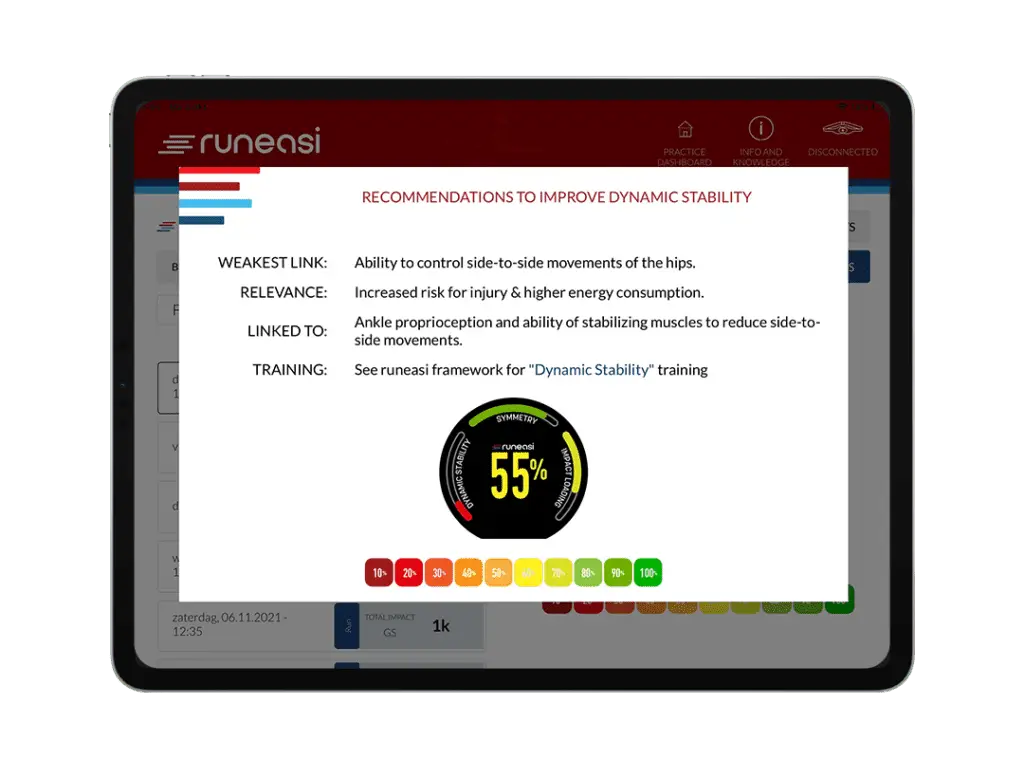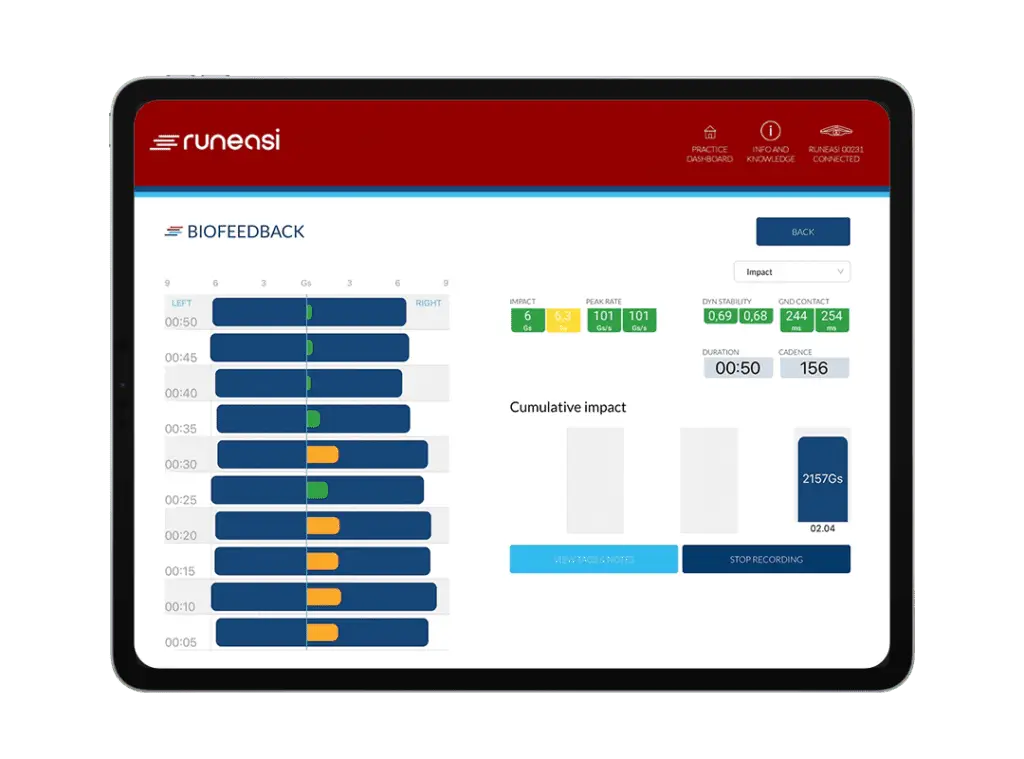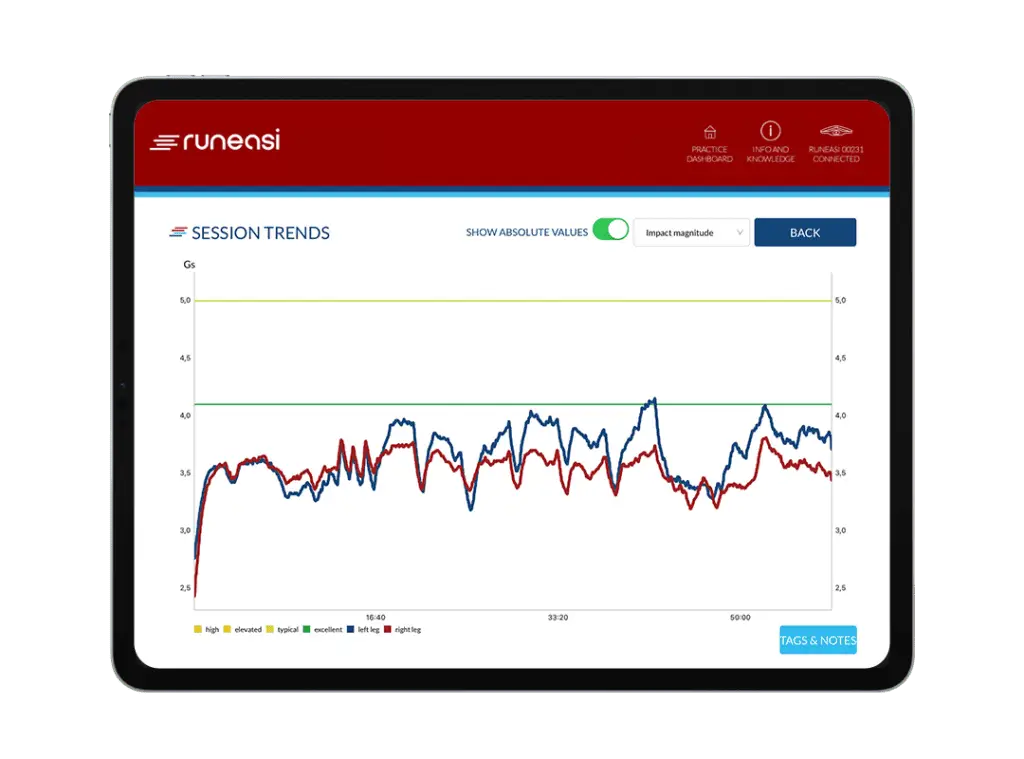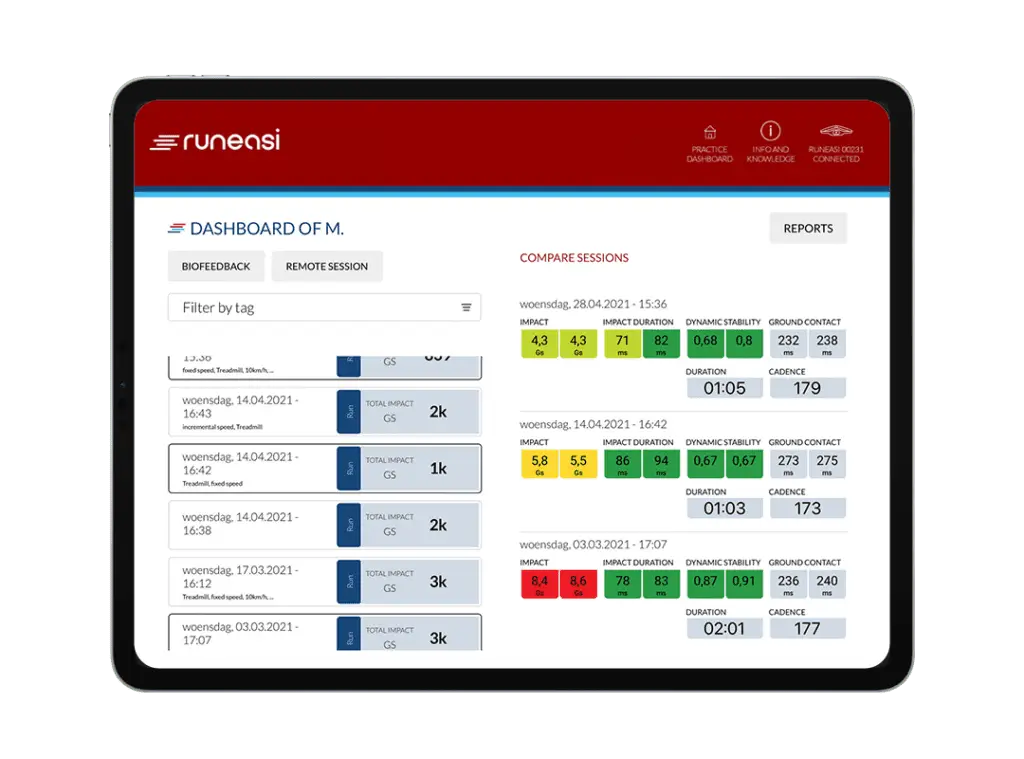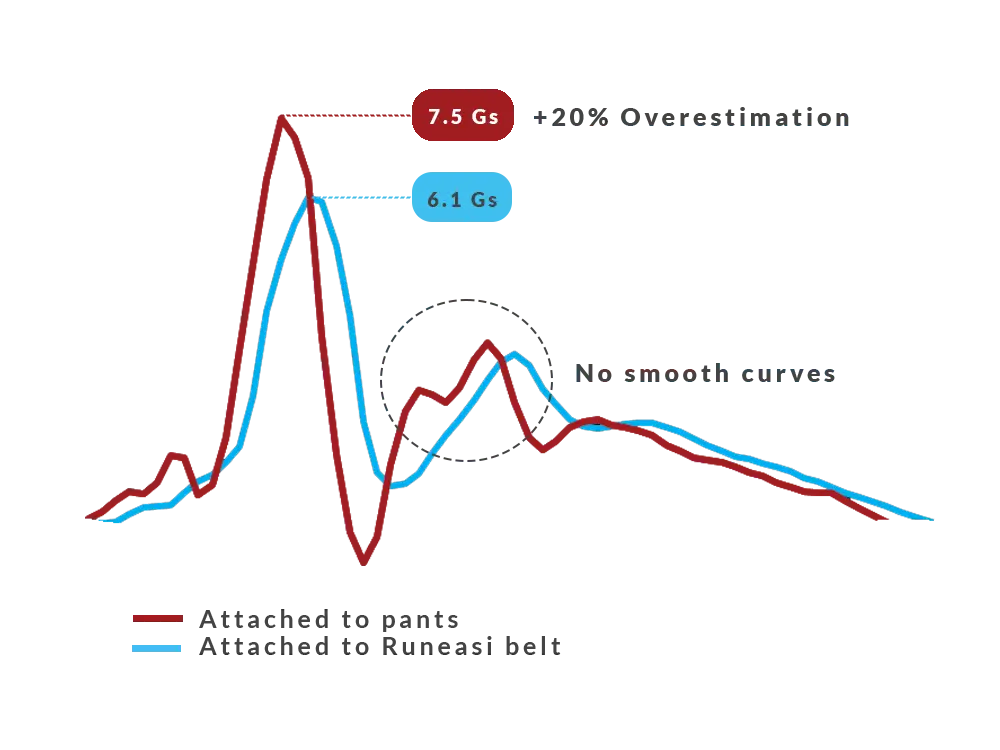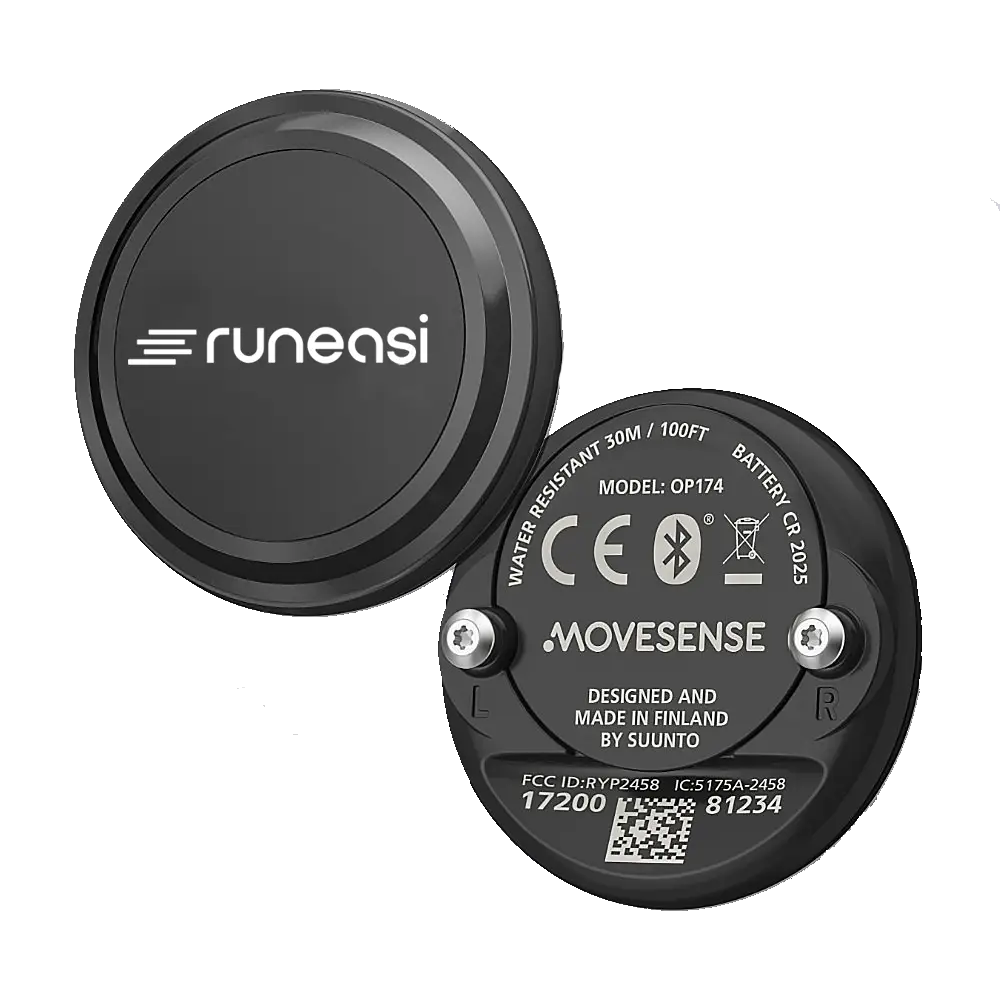Real-time biofeedback case – finding the balance between speed and rhythm
Real-time biofeedback case – finding the balance between speed and rhythm
By Philip Cortvriendt – Runeasi expert
During the initial assessment, we observed that the runner’s stability deteriorated over the course of her run. Although she didn’t feel fatigued, a visual inspection revealed that her pelvic stability was compromised. Her pelvis was tilting forward (anteverted position), and her upper body was leaning forward to compensate for insufficient glute engagement.
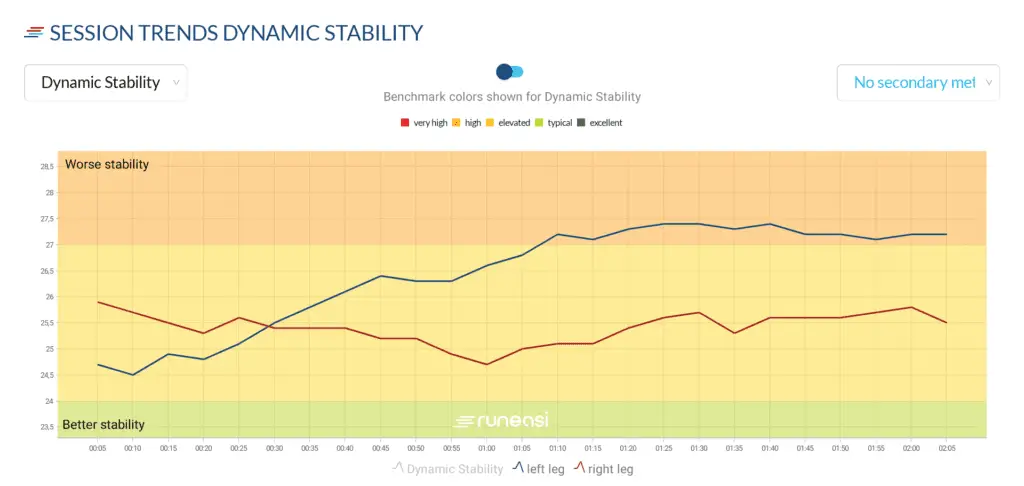
addressing and improving her running form
- Slowed Down the Speed: We reduced her running speed by 1 km/h. This slight decrease made it easier for her to maintain proper form.
- Increased Cadence: By slightly increasing her rhythm, we aimed to minimize the prolonged push-off that contributed to her backward pelvic tilt and forward upper body lean.
- Posture Cue: We added the cue “stay tall” to encourage better gluteal engagement and improve overall posture during the run.
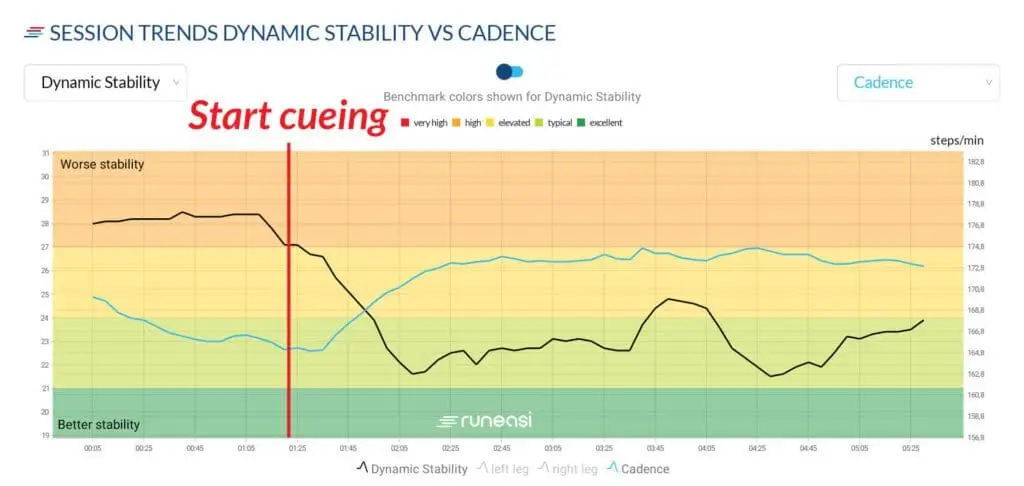
These adjustments led to an improvement of 30% in her dynamic stability, indicating that her stability issues were more related to form rather than fatigue. During the biofeedback session she could maintain the improved stability, which suggests that her previous decline in stability was due to a loss of proper form.
Conclusions
For this runner, the key takeaway is to first master maintaining these improved movement patterns at a slower pace. Once she can consistently maintain good form at lower speeds, she can gradually increase her pace while still adhering to the learned patterns. With the simple cue of “staying tall”, she was engaging her glutes more during the stance phase and ultimately improving her running

Written by Philip Cortvriendt
Philip achieved a master’s degree in physiotherapy & rehabilitation sciences and has core expertise in the field of running, working with both recreational and elite runners. Philip has the unique role of educating Runeasi physiotherapists and helping them translate biomechanical insights into targeted strength and conditioning exercises- specifically on how they can improve their client care using scientifically validated biomechanical insights from our Runeasi analytics.

